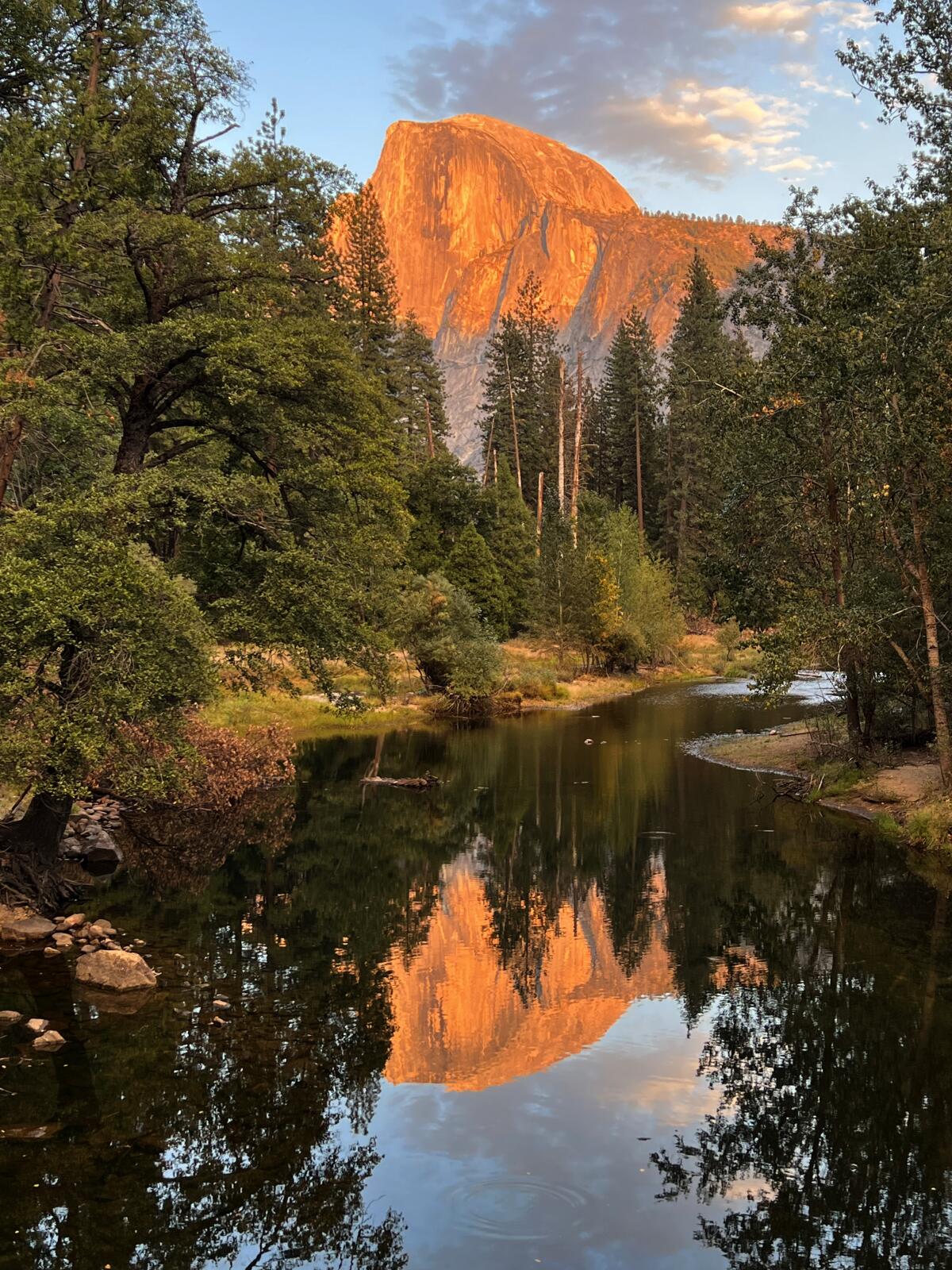Prepare for crowds: Yosemite will not use a reservation system in summer 2023

- Share via
Yosemite National Park, which used a reservation system the last three summers to limit crowds while dealing with COVID-19 and infrastructure work, will not require reservations in summer 2023.
Park officials made the announcement on Twitter Tuesday morning. The move means less red tape for travelers but sparked worries among some park-watchers that difficult crowding might lie ahead.
As park officials noted, “Yosemite has been grappling with congestion — even gridlock — for decades. We want to build from the lessons learned from the last three summer[s] of managed access.”
In their announcement, National Park Service officials noted the reservation system has been a temporary measure up to now, and that more research is needed before they can put a permanent system in place. They added that in December, “we’ll start seeking your help to design an approach that provides a great visitor experience while protecting Yosemite’s natural and cultural resources.”
The National Parks Conservation Assn. responded warily. The association’s Sierra Nevada program manager, Mark Rose, said in a statement that “we’re glad the park has committed to finding a long-term solution to the overcrowding problems that have long been endemic at Yosemite. However, it’s disappointing that park managers have chosen to hit pause on a highly successful reservation system in the meantime. We don’t want to see a return to the days of visitors being stuck in hours-long traffic lines before hiking overcrowded trails.”
Rose said the announcement “sends mixed messages and will also create more uncertainty and confusion for visitors and nearby communities.”
Among the Twitter responses, some people welcomed the move, but several fired back.
“Oh no, don’t get rid of the reservation system!” one person commented.
“That’s unfortunate,” wrote another. “It’s difficult to enjoy the park when it’s overcrowded.”
This past summer, Yosemite required reservations for all peak-hours day-trip visitors between May 20 and Sept. 30. With that system in place, Yosemite’s rangers counted 507,923 visitors in August, a dramatic drop from 703,153 visitors who were counted in August 2019, the park’s last pre-COVID, pre-reservation summer.
Chelsie Layman, director of sales and marketing in the offices of Yosemite Hospitality, the Aramark subsidy that serves as main concessionaire in the park, said “We support the park’s decision and are fully behind what they have chosen to do.”
Layman said the company has already been taking steps to reduce effects of crowding, including adding kiosks to shorten lines for ordering food at restaurants in Yosemite Valley.
Park officials had previous announced that the popular Ahwahnee Hotel, a landmark in the valley, will close Jan. 2 to March 2 for seismic upgrades, with reopening planned for March 3. However, Layman noted, further work on the Ahwahnee will continue for several months after the hotel reopens.
More to Read
Sign up for The Wild
We’ll help you find the best places to hike, bike and run, as well as the perfect silent spots for meditation and yoga.
You may occasionally receive promotional content from the Los Angeles Times.







